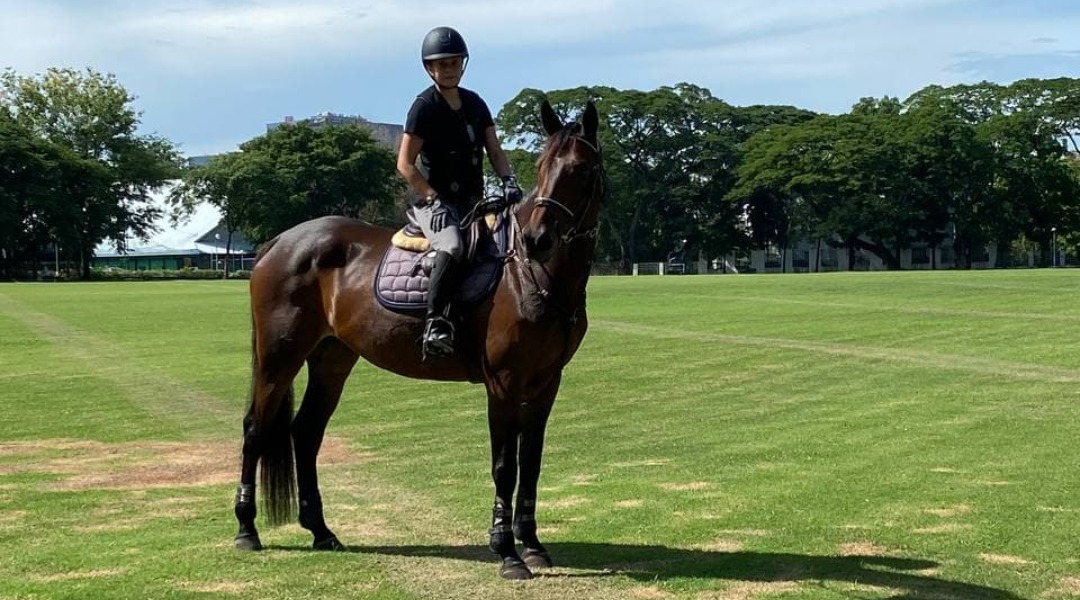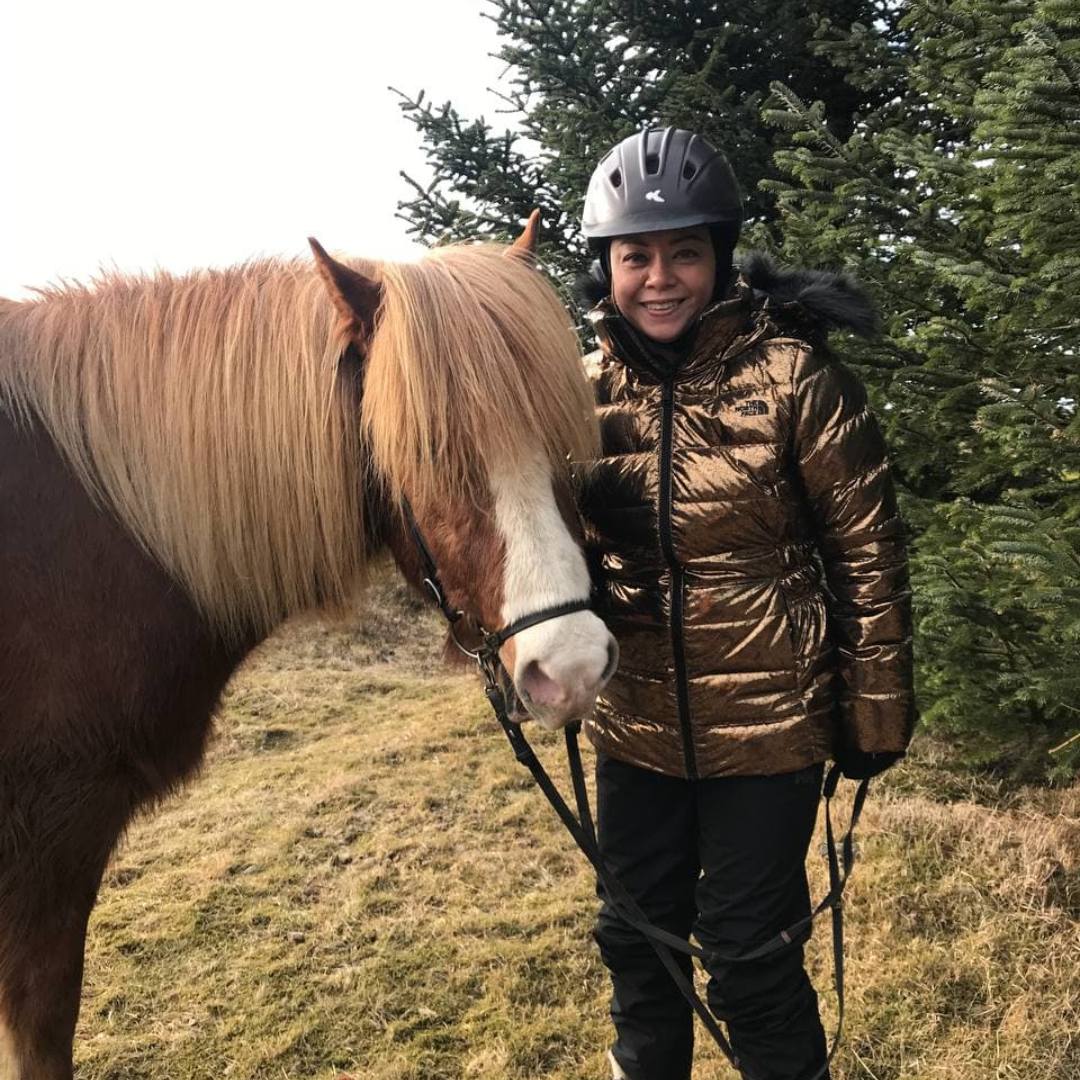The equestrienne turned content creator and producer may have left the sport for a while, but her passion and fondness for horses led her to return once more.
Before joining the media and creatives industry as a producer and content creator, Katrina Holigores was first an equestrienne. Coming from a family who is passionate about Polo and equestrianism, it was natural for her to treat the horse like a spirit animal.
While she drifted in and out of the competitive sport, what ultimately led her to return is receiving her horse Lochart as a gift. “That was a defining moment for me as a re-entry back into the riding world,” Holigores says. Even abroad, she would enter competitions given the opportunity.
Immersed in her passion once more, she tries to train with her new horse Baileys as much as the quarantine measures would allow her.

A stable mind
Having mental blocks is a typical challenge athletes encounter. When you’re young, Holigores explains, “you don’t have a lot of negative experiences… instead of focusing on the riding, you’re focusing on everything else that could go wrong.”
She explains a metaphor by sports neuropsychologist Dr. Jenny Susser: “A plastic bag could be perceived as a threat or danger when honestly, it’s really just a plastic bag,” she says. “You’re thinking, ‘oh, the sound it’s going to make, it’s going to fly into the arena, it’s going to freak out my horse…’” When in truth, it is simply a plastic bag.
To steer herself away from these negative thoughts, she meditates once or twice a day. “Before I get on the horse, I try to get to a very neutral state of mind and do some breathwork.” Meditating reduces stress, controls anxiety, and allows one in a state of self-awareness. It’s all about “removing or diluting the negative stuff or the things that could go wrong and looking at the things that are going well,” Holigores continues.
While balance is essential in horse riding, Holigores says mental stability is equally important. “You need to be so mentally strong for it because you’re on an animal,” she says, adding that they can be unpredictable and can change their moods quickly.
Holigores says you have to be brave, especially in doing jumps during shows. “You’re jumping over obstacles that are not natural to the horse.”
ALSO READ: The Enduring Aesthetic Of The Horse Girl
A match made
Throughout the years, the equestrienne owned different horses but there are four who are dear to her.
The first is Microchip, an Appaloosa stallion she had in her early twenties. She considers him as her ‘soulmate horse’ as they won many competitions together. The second is Lochart, who passed away last year. The third is Quatrain who was sold to her good friend. Despite the parting, Holigores is still able to visit Quatrain from time to time.
The fourth is one she met last year. Holigores practices her manifestation techniques in life as an energy healer, even in selecting a new horse. Before leaving for Europe, she listed down the characteristics of her ideal horse, including the date she will meet the animal.
The universe heeded her manifestation when she met Baileys on the third day—her expected time.
“When I walked into the stables, I saw [that she] was being tacked up,” the equestrienne describes, referring to the act of placing the gear and saddle on the horse’s back. “She actually went up to me and nuzzled me… she started to breathe in for me.”
Holigores knew Baileys is the one. It was further cemented when they did jump exercises and the animal “got everything almost perfectly. When I would make a slight mistake, she saved me.”
From then on, they formed a strong bond that was interrupted by the pandemic. “She reminds me a little bit like a dog,” the equestrienne says about Baileys, given the animal’s affectionate mannerisms. Thankfully, when the quarantine measures allow, she is able to visit her new horse.

Caring for riding partners
Like any other animal companion, horses demand great care but even more so, says Holigores. They are investments “that may not pay off, monetarily. In fact, it almost never does in the Philippines,” she admits.
But love for the animal should be given priority more than what it can offer to its owner. Standard horses require “proper ventilation where they stay in their stall,” the equestrienne says. “They have good bedding or footing for where they sleep and stand. Of course, fresh water all the time… [and] good food.”
Together with Team Equisport, a group of equestriennes in the country headed by professional instructor Janine Felix, they buy supplements or electrolytes for their horses. They also call equine chiropractors and specialists to oversee the health of the horses.
For Baileys, Holigores adds turmeric cubes to the animal’s diet. Given its medicinal properties including aiding in good digestion, the turmeric can give the 12-year-old horse additional strength.
The horses need affection as well, especially when they are no longer performing the way they used to.
“I feel very passionately about this because I see horses that are not getting the care… and are left in the stable for years,” Holigores continues. Her personal philosophy is “As long as it’s in your care, you will care for it.”





